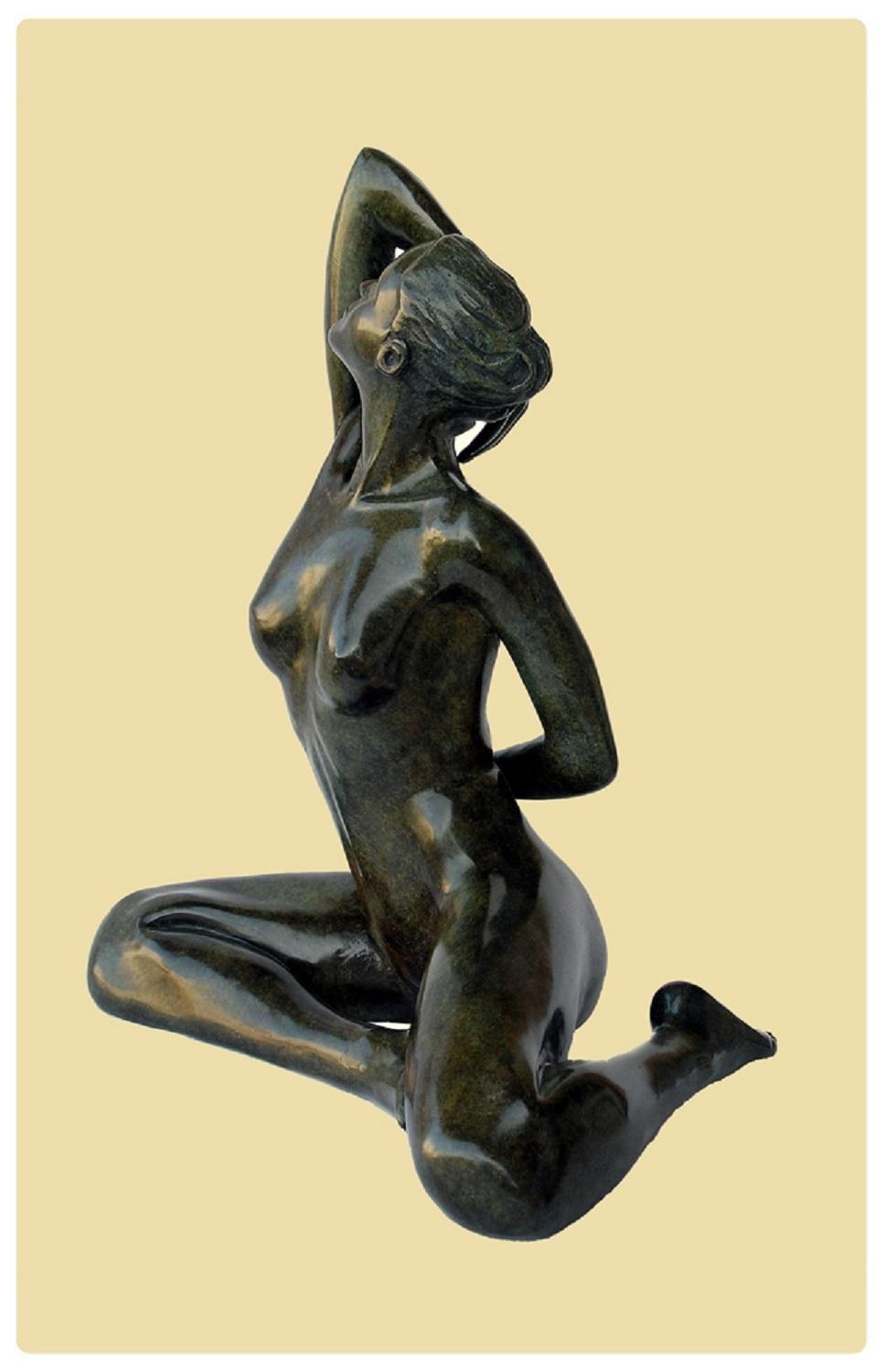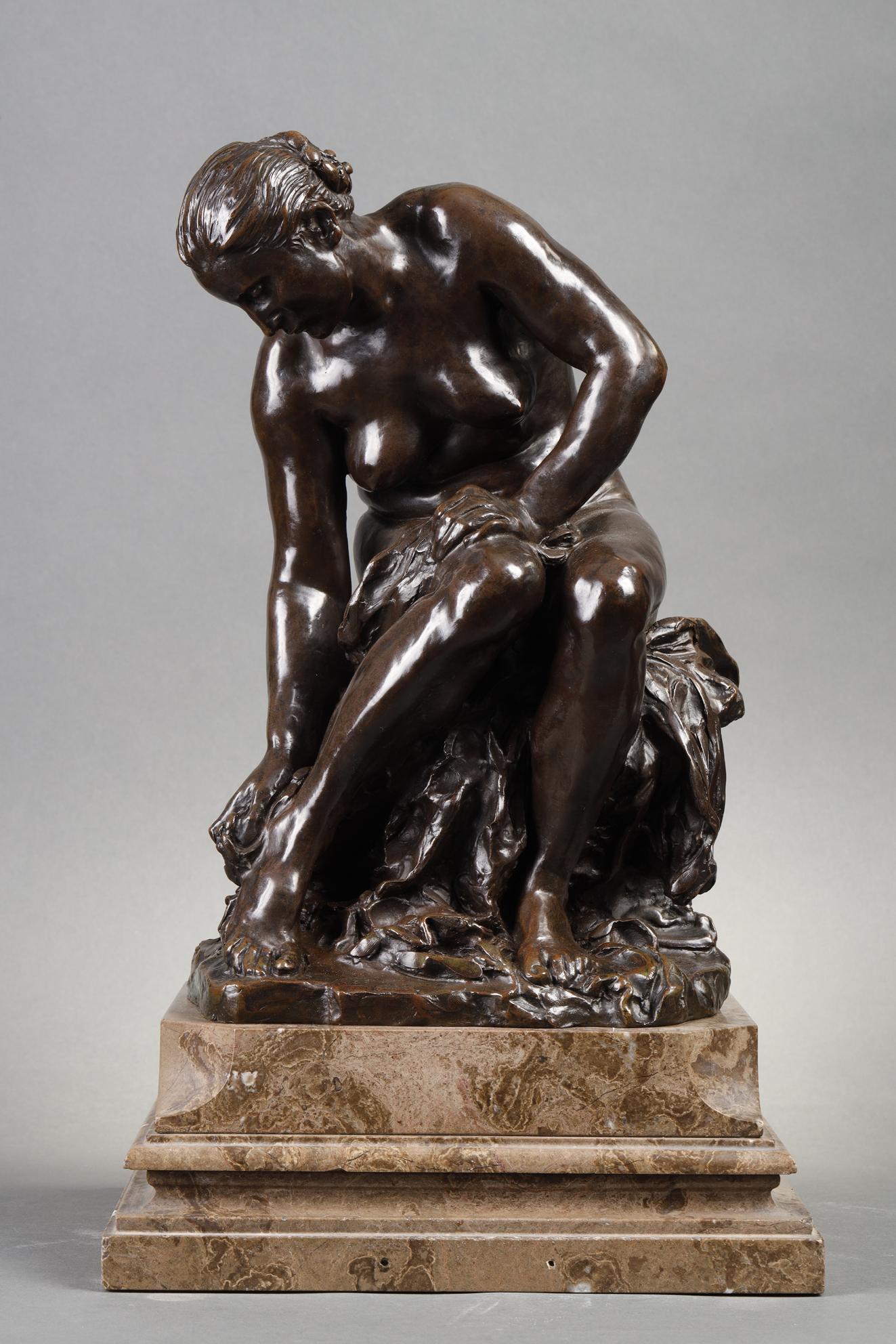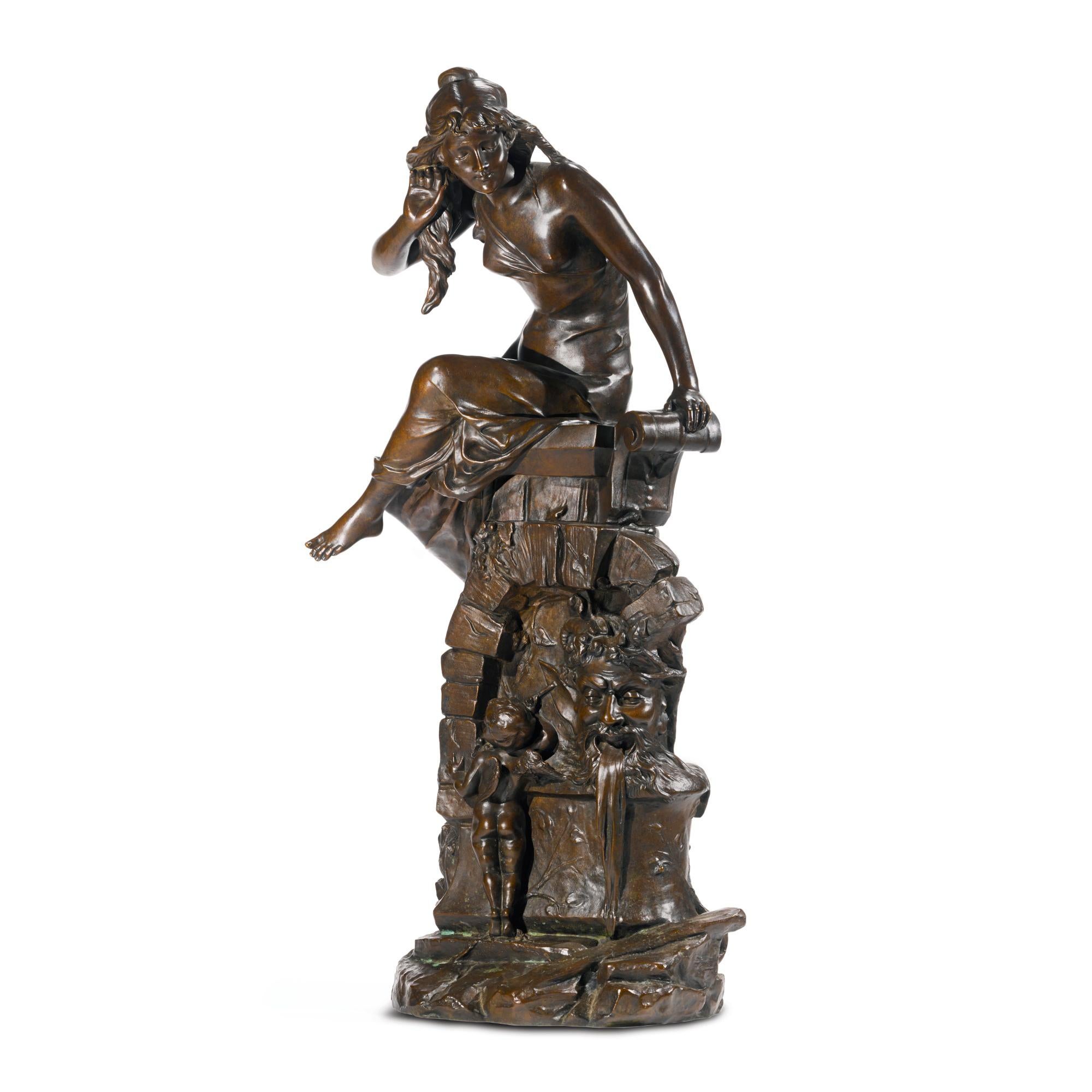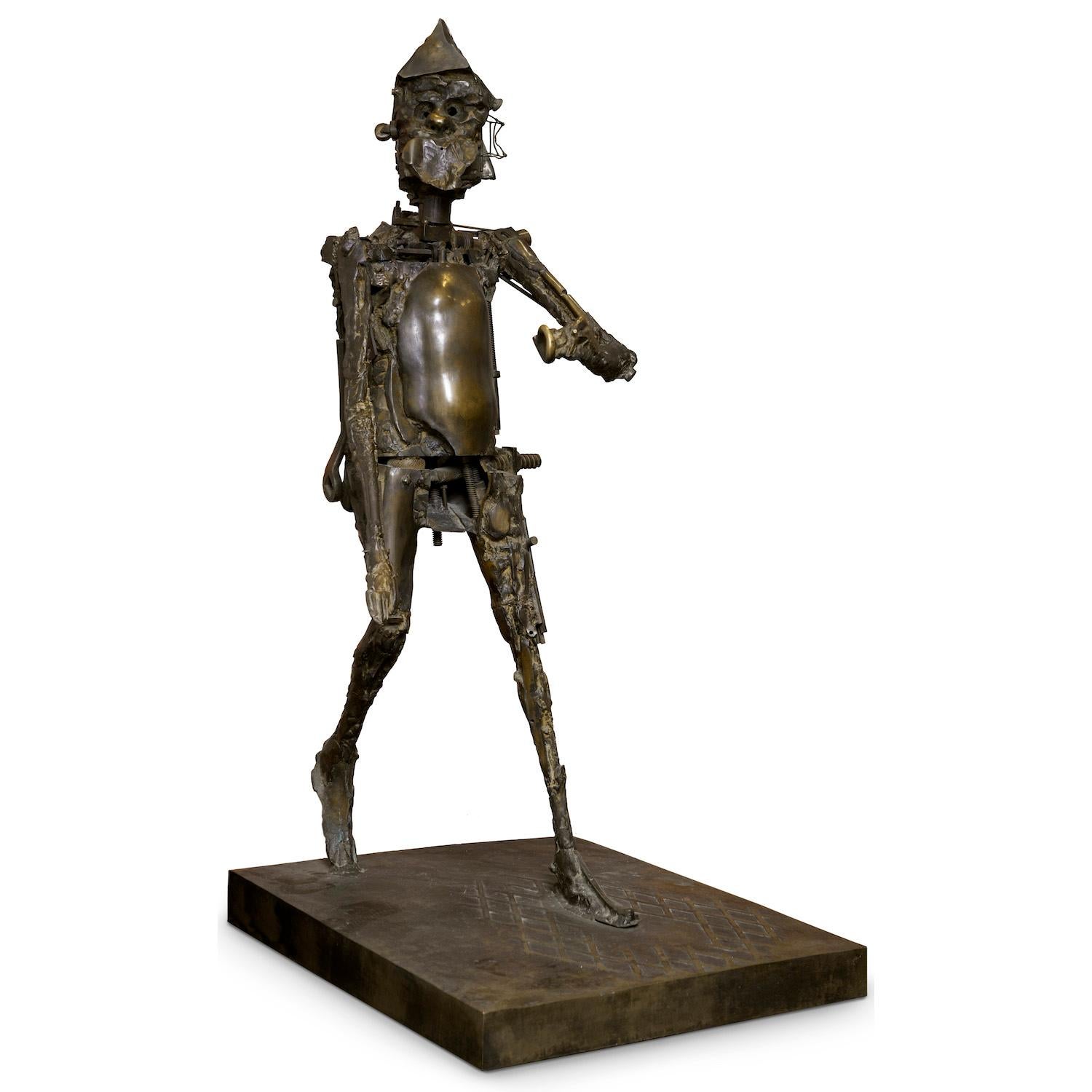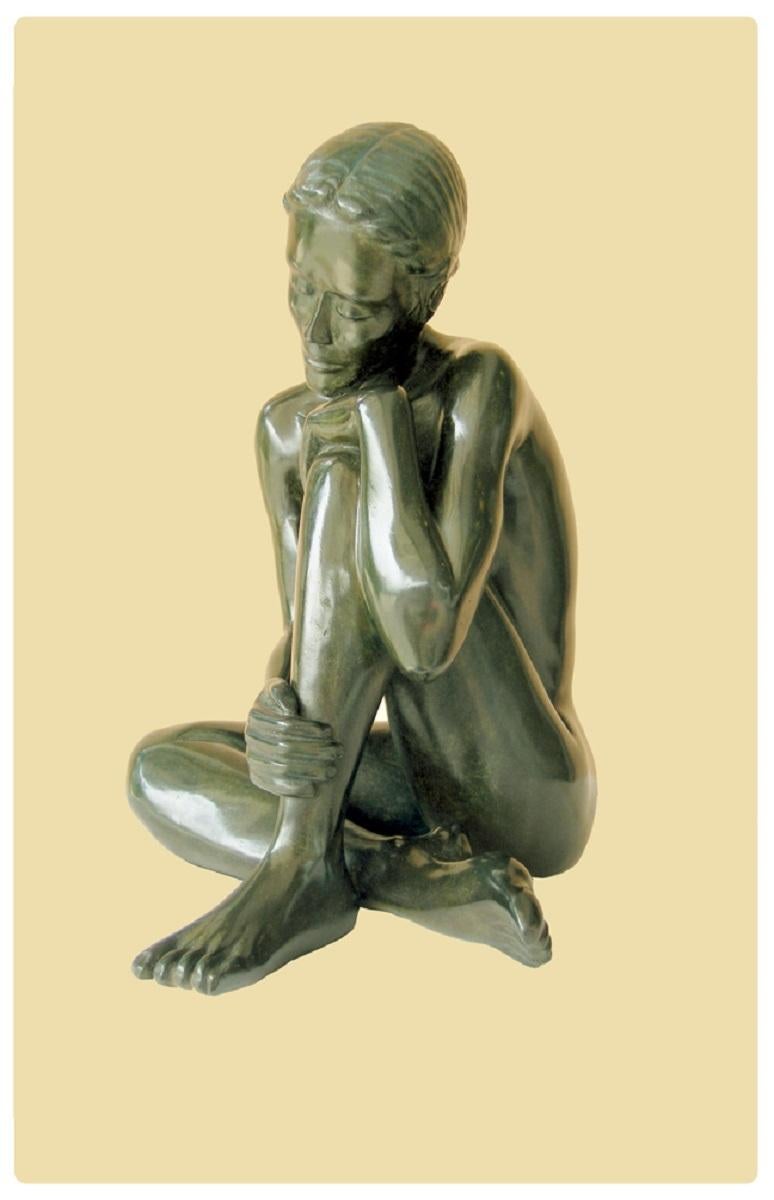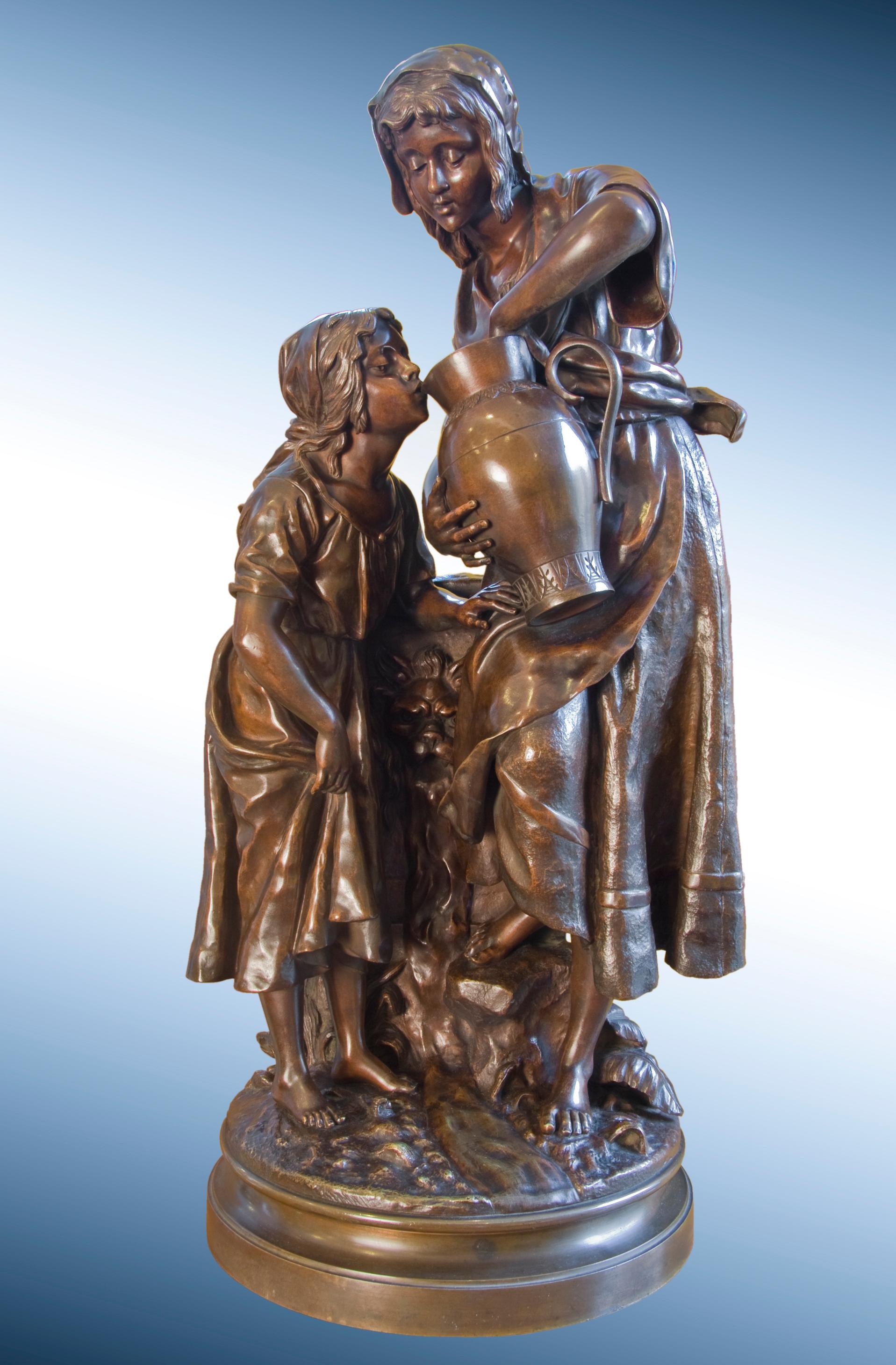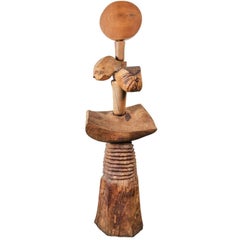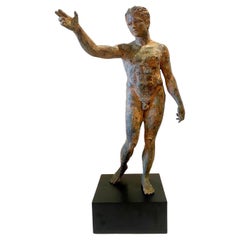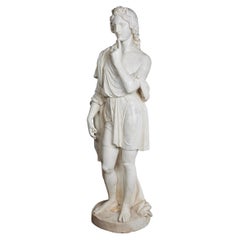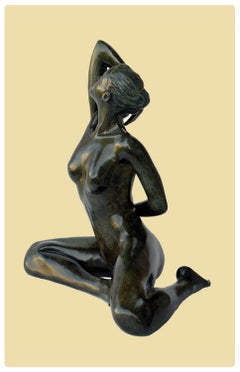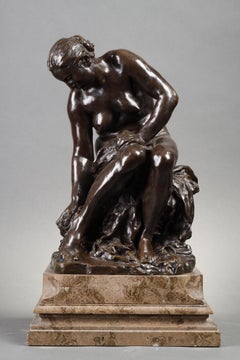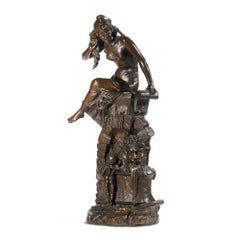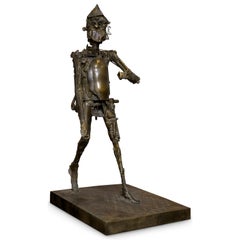Want more images or videos?
Request additional images or videos from the seller
1 of 9
Jean-Baptiste Pigalleunknown
$8,800
£6,667.67
€7,650.62
CA$12,383.02
A$13,612.35
CHF 7,154.02
MX$165,303.46
NOK 89,244.66
SEK 84,553.04
DKK 57,098.53
About the Item
A classic terra cotta sculpture of Mercury signed Jean-Baptiste Pigalle (1714-1785).
- Creator:Jean-Baptiste Pigalle (1714 - 1785)
- Dimensions:Height: 22.5 in (57.15 cm)Width: 13 in (33.02 cm)Depth: 12.5 in (31.75 cm)
- Medium:
- Period:
- Condition:No chips nor cracks.
- Gallery Location:Los Angeles, CA
- Reference Number:1stDibs: LU2563212553482
About the Seller
5.0
Vetted Professional Seller
Every seller passes strict standards for authenticity and reliability
1stDibs seller since 2023
Typical response time: 1 hour
- ShippingRetrieving quote...Shipping from: Los Angeles, CA
- Return Policy
Authenticity Guarantee
In the unlikely event there’s an issue with an item’s authenticity, contact us within 1 year for a full refund. DetailsMoney-Back Guarantee
If your item is not as described, is damaged in transit, or does not arrive, contact us within 7 days for a full refund. Details24-Hour Cancellation
You have a 24-hour grace period in which to reconsider your purchase, with no questions asked.Vetted Professional Sellers
Our world-class sellers must adhere to strict standards for service and quality, maintaining the integrity of our listings.Price-Match Guarantee
If you find that a seller listed the same item for a lower price elsewhere, we’ll match it.Trusted Global Delivery
Our best-in-class carrier network provides specialized shipping options worldwide, including custom delivery.More From This Seller
View AllCast Bronze Sculpture by Robert Lienhard
Located in Los Angeles, CA
Hand-cast, bronze sculpture of a seated woman by listed, Swiss artist, Robert Lienhard (1919-1989). Signed and numbered on base, #5 of 7.
Category
1960s Sculptures
Materials
Bronze
Life-Sized, Abstract Figurative Sculpture
Located in Los Angeles, CA
Remarkable, large, hand-carved, tribal-type, teak sculpture of an abstract, female form featuring a mix of refined and rough finishes.
Category
1920s Figurative Sculptures
Materials
Wood
Roman Bronze Statue of Youth
Located in Los Angeles, CA
A cast, Roman, Grand Tour bronze figure of a youth. Wonderful patina. Measures : Statue is 23"H. Base is 8.75"W x 7.5"D.
Category
Early 1900s Sculptures
Materials
Bronze
Life Size Roman Marble Figure
Located in Los Angeles, CA
A beautifully hand carved, full size Carrara marble figure of a boy. The robe is elegantly draped with clasps.
Category
19th Century Baroque Figurative Sculptures
Materials
Marble
19th Century Austrian Sculpture of Fate
By Franz Melnitzky
Located in Los Angeles, CA
A signed, dated, 1855 terracotta, classical style sculpture of the robed figure of Fate holding the thread of life by listed, Austrian-born artist, Franz Melnitzky (1822-1876) whose ...
Category
1850s Figurative Sculptures
Materials
Terracotta
Large, Cast Bronze Roman Figures
Located in Los Angeles, CA
A pair of large, detailed cast bronze Roman figures of a senator (likely Julius Caesar) and possibly an emperor. Each in cascading drapery with beautifully rendered facial expression...
Category
1910s Figurative Sculptures
Materials
Marble, Bronze
You May Also Like
Agosta
By Patrick Brun
Located in Pasadena, CA
Patrick BRUN was born in Paris in 1941. After obtaining his Engineering degree, he began his professional life as a teacher in mathematics and physics. After this period, he started ...
Category
2010s Contemporary Figurative Sculptures
Materials
Bronze
$3,840 Sale Price
33% Off
Suzanne
By Aimé-Jules Dalou
Located in PARIS, FR
Bathing woman drying her right foot
also known as "Suzanne"
by Aimé-Jules DALOU (1838-1902)
A bronze sculpture with a nuanced dark brown patina
Signed on the base " Dalou "
A very...
Category
Early 20th Century French School Figurative Sculptures
Materials
Bronze
Le Secret
By Edouard Drouot
Located in New York, NY
ÉDOUARD DROUOT
French, (1859-1945)
Le Secret
Patinated bronze; Signed E. Drouot.
25 1/2 X 10 X 9 1/2 inches
Category
Late 19th Century Figurative Sculptures
Materials
Bronze
Napoléon
By César Baldaccini
Located in Malmo, SE
Napoléon.
(Epruve d’artiste EA 1/2)
Bocquel fondeur.
Acquired directly from the artist.
Signed by the artist.
César Baldaccini (1921 – 1998) is one of the great sculptors of the twentieth century. As a young man he took a stand for art...
Category
1980s Contemporary Figurative Sculptures
Materials
Bronze
Bahia
By Patrick Brun
Located in Pasadena, CA
Patrick BRUN was born in Paris in 1941. After obtaining his Engineering degree, he began his professional life as a teacher in mathematics and physics. After this period, he started ...
Category
2010s Contemporary Figurative Sculptures
Materials
Bronze
$5,200 Sale Price
20% Off
A la fontaine
By Émile Nestor Joseph Carlier 1
Located in Mc Lean, VA
Nice 19th-century cast with rich, brown patina by French sculptor Emile-Joseph-Nestor Carlier. Carlier frequently created large, multi-figural group sculptures. These are dramatic an...
Category
Late 19th Century Realist Figurative Sculptures
Materials
Bronze
$11,500
More Ways To Browse
Mercury Sculpture
Jean Baptiste Pigalle
Richard Macdonald Allonge
Richard Macdonald Elena
Richard Macdonald Sissone
Richard Orlinski Panther
Salvador Dali Ceramic
Salvador Dali Tile
Silver Sculpture Salvador Dali
Sima Josef
Spray Paint Can Sculpture
Stanislaw Wysocki
Susan Kemenyffy
Taller Alfonso Castillo Orta
Tete De Chevre De Profil
Thalia Sculpture
Waldo Peirce
Yves Klein Pompon
